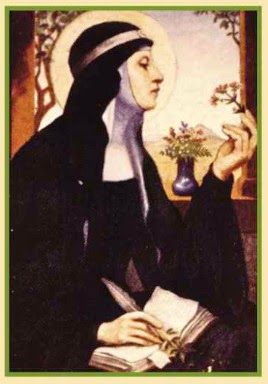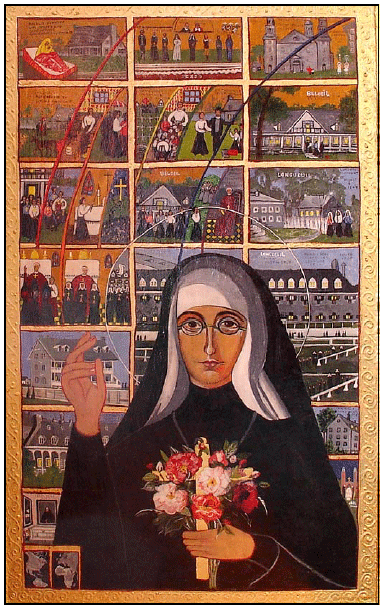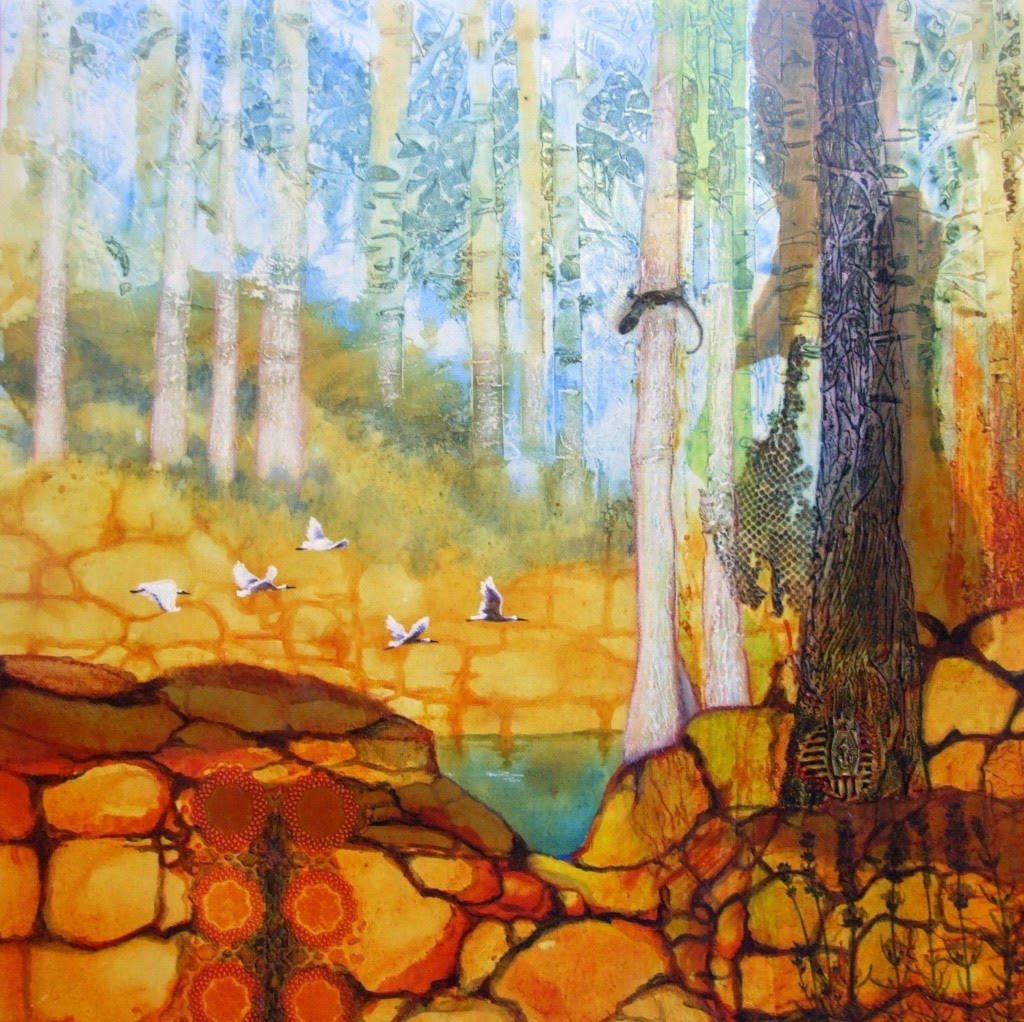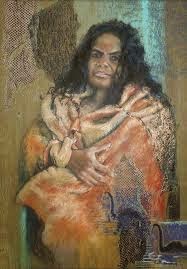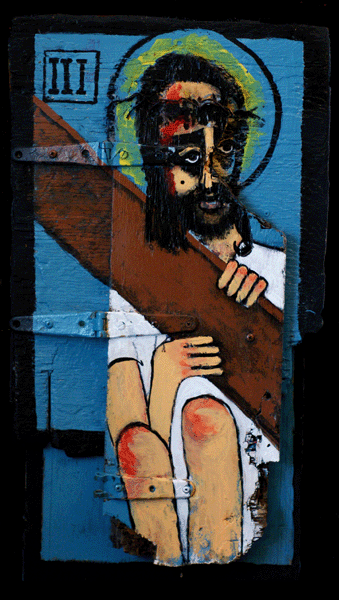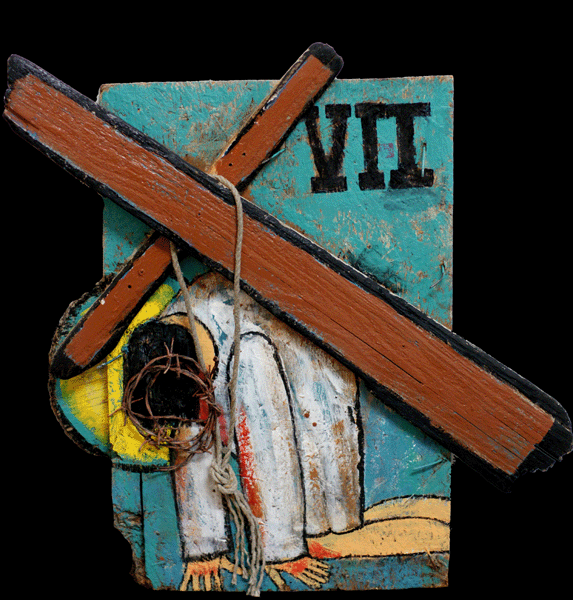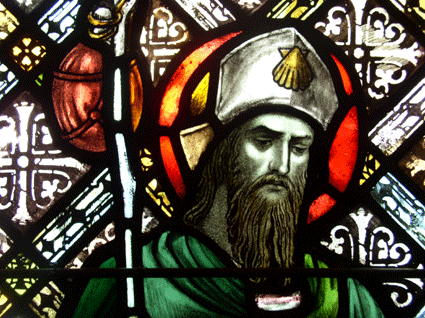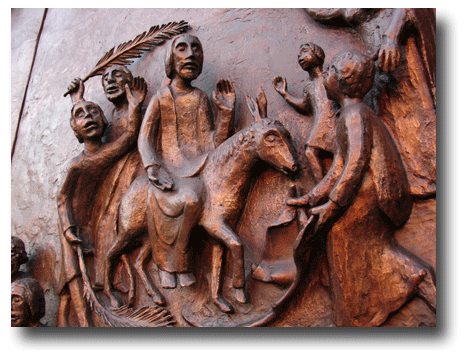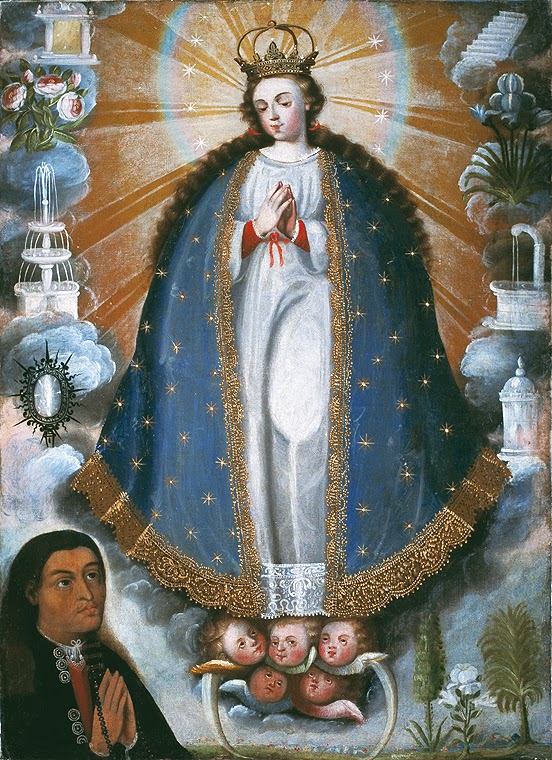 |
| Carol Anne Cipriani |
...the birds of heaven brought to him meat for to eat. And it seemed to him that they came to serve him and accompany him, and would not depart from him till he had lift up his hands and blessed them.
Now it happened that the prince of this region sent his knights to hunt, and they could take nothing. But by adventure they came unto the desert place where S. Blase was, where they found great multitude of beasts which were about him, of whom they could take none, whereof they were all abashed and showed this to their lord, the which anon sent many knights for him, and commanded to bring him and all the christian men with him.
Then of course we think of ST. ISIDORE the farmer who cared for livestock (sometimes having his angel do the plowing while he prayed!). He was known for his piety and care for the poor. The story of St. Isidore is a reminder of the dignity of work, and that ordinary life can lead to holiness. In 1947, at the request of the National Catholic Rural Life Conference, he was officially named patron of farmers.
 |
| St. Isidore-Retable |
ST. GERLAC of VALKENBURG was a 12th-century Dutch hermit. He was also a friend of St. Hildegard of Bingen. He is considered a patron of domestic animals, but I could not find a reason why.
 |
As I have mentioned in past blogs, we traditionally bless all the animals on the feast of ST. ANTHONY the ABBOT(Jan. 17). He is called the Father of all monks. He anticipated the rule of St. Benedict who lived 200 years later; "pray and work", by engaging himself and his disciple or disciples in manual labor. He was known to raise pigs in the Egyptian desert.
 |
| Carlotta Lorenzo- Mexico |
Mother Cat would have my hide if I did not mention ST. PHARAILDIS of GHENTas patroness of poultry. She was an 8th-century Belgian girl who was married against her will at a young age with a nobleman, even after having made a private vow of virginity. Her husband insisted that she was married to him, and her sexual fidelity was owed to him, not God.
She was therefore physically abused for her refusal to submit to him, and for her late night visits to churches. When widowed, she was still a virgin, and dedicated herself to charity. She became patroness of fowl after she resuscitated a cooked goose, working only from its skin and bones. Such are the wonders of heaven!
But what about our most treasured pets? We begin with my least favorite of those domestic beasts CATS. ST. GERTRUDE of NIVELLES,who was born in Belgium in 626 and died at Nivelles, 659. Both her parents, Pepin of Landen and Itta were held to be holy by those who knew them and her sister Begga is numbered among the Saints. On her husband's death in 640, Itta founded a Benedictine monastery at Nivelles, near Brussels, and appointed Gertrude its abbess when she reached twenty Gertrude tended to her responsibilities well, with her mother's assistance, and followed her in giving encouragement and help to monks, particularly Irish ones, to do missionary work in the locale.
St Gertrude's piety was evident even when she was as young as ten, when she turned down the offer of a noble marriage, declaring that she would not marry him or any other suitor: Christ alone would be her bridegroom. She was known for her hospitality to pilgrims and her aid to missionary monks from Ireland as we indicated above. She gave land to one monk so that he could build a monastery at Fosse. By her early thirties St. Gertrude had become so weakened by the austerity of abstaining from food and sleep that she had to resign her office, and spent the rest of her days studying Scripture and doing penance. It is said that on the day before her death she sent a messenger to Fosse, asking the superior if he knew when she would die.
His reply indicated that death would come the next day during holy Mass----the prophecy was fulfilled. Her feast day of March 17 is observed by gardeners, who regard fine weather on that day as a sign to begin spring planting.
There’s no single story that links St. Gertrude to her patronage of cats. However, writings confirm that she and her nuns kept cats to control the rodent population.
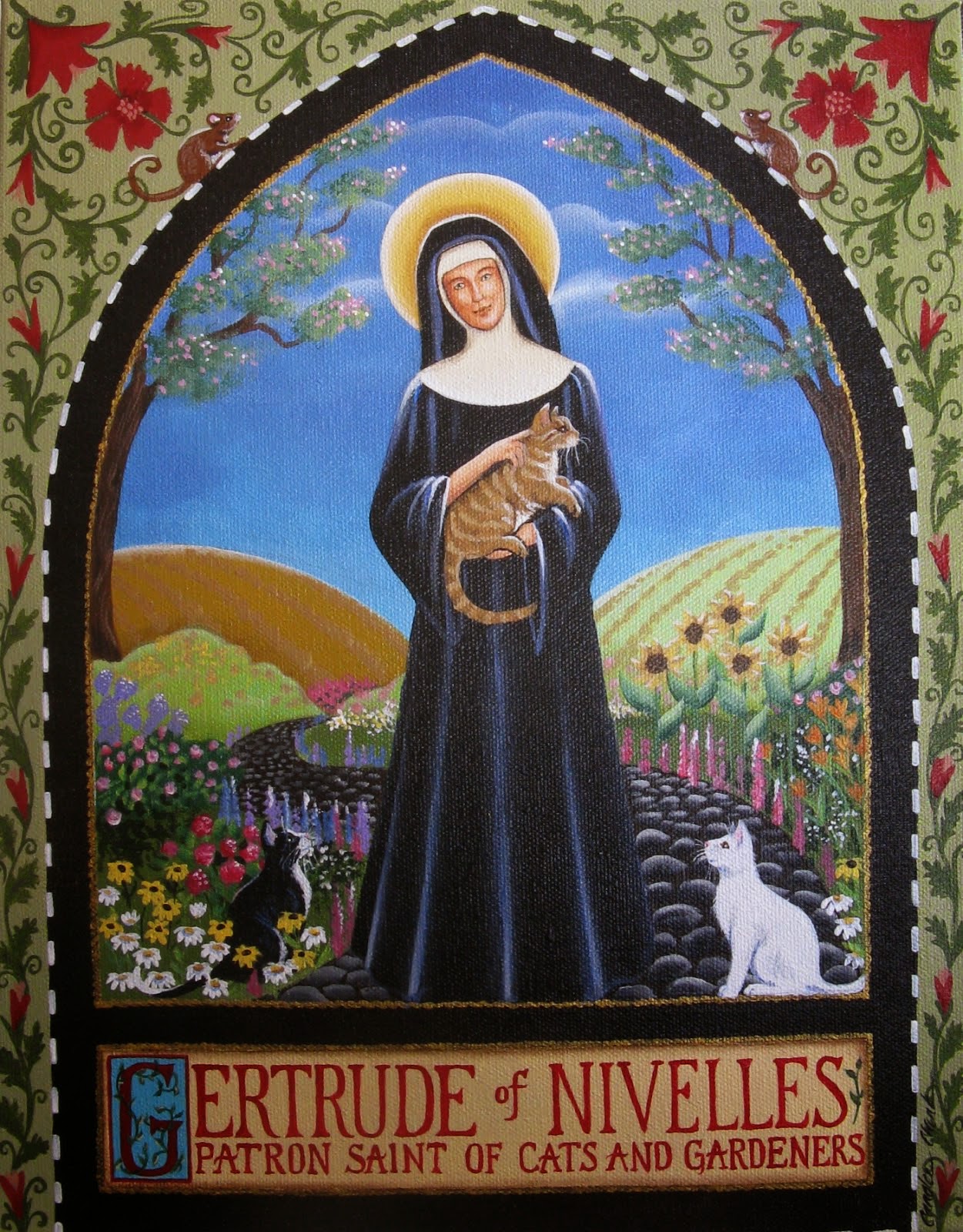 |
| Carolee Clark |
Other accounts say she prayed for the mice to go away and they did. Because of the great mouse exodus, people referred to her as the patroness of cat lovers. She is often depicted with a cat near her or with mice running up her staff. The mice in her icons are said to represent souls trapped in Purgatory, whom she diligently prayed for.
Another holy woman usually depicted with her cat is JULIAN of NORWICH, an English anchoress, who is regarded as one of the most important Christian mystics. She is venerated in the Anglican and Lutheran churches, but has never been canonized, or officially beatified, by the Roman Catholic Church, probably because so little is known of her life aside from her writings. She is unofficially venerated in the Catholic Church, much as St. Hildegard of Bingen was before her de facto canonization by Pope Benedict XVI.
 |
| Juliet Venter-UK |
Julian never left her cell. She had a servant who brought her meals and she kept a small garden with a high wall that insulated her from the ordinary life of the time. She listened through a curtained window to those who needed counsel. The only other living soul who entered her space was her cat. She was allowed a cat for purely practical reasons, to keep the rat population at bay. Unbeknownst to the outside world however, she had a close relationship with her beloved cat. They would sit for hours in Julian's garden in contemplation and prayer.
 |
 |
| Marchela Dimitrova |


